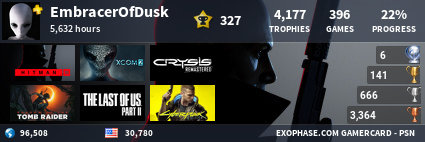Greatest Video Games of All-Time (IMO) - #63
Log in or Register for free to comment
Recently Spotted:
Archangel3371 (8m)





63| Super Mario 64
Released: September 26th, 1996
Definitive Version: Nintendo DS; Also on: N64, Virtual Console for Wii & Wii U
Before Nintendo began designing the levels, before they even put up a single platform, Miyamoto had his team focus on one single thing, to make Mario control fun in an open area. Mario didn't just have to function in a 3D space, he had to excel. Just the act of running around and jumping would have to gauger interest of the player, just like it did in the original Super Mario Bros. Nintendo succeeded so much that they actually began the game in a 3D open area outside of Peach's castle. Before many players even started the game they spent at least five minutes running around hoping, jumping, and climbing outside. Once they were done taking Mario for a test drive the real game began.
Players entered Peach's castle and came across multiple rooms. In most of these rooms is a huge painting. If Mario jumps into one of these paintings he enters a level. One would expect levels to be much like Crash Bandicoot, that Mario can only progress in one direction, presumably "up", as he bounces on enemy heads and hits boxes. Nintendo certainly could have gone this route, but they found it to be too lazy and predictable. Instead they had, for the time, huge open 3D worlds for the player to explore. There were obviously paths laid out for the player, but they often didn't have to take them. On top of that many of these paths branched out. Due to this non-linearity rather than the game focusing on Mario jumping on a single flagpole to mark the end of a level, instead he collects multiple stars. Each level has an average of seven stars. These stars can be earned by collecting coins, getting to one of the end points, or finding and defeating a secret boss. Most modern games reward players with "achievements" as they often due run of the mill things to earn notch on their belts, Super Mario 64 built the entire game around that and had to make players work for their objectives.
The controls really need to be elaborated more on just how great they are. Mario feels absolutely perfect in this game. The player can press the "A" button to jump once, if they press it again once Mario lands on the ground to jump a little higher, and if they press it a third time he will jump even higher and much further. If the trigger button is pressed while jumping Mario will do a butt pound just like Yoshi and Yoshi's Island, if the trigger is press shortly before "A" while Mario is running he will lunge forward. If "A" is pressed again he will launch a bit further face first as he will land sliding like a baseball player attempting to reach for a base. If trigger is pressed before "A" and the control stick is pushed back then Mario will perform a backwards somersault. The four "C" buttons on the controller control different camera angles so the direction the player is heading will always be visible. The "B" button can punch or kick if it is pressed after Mario jumps. It may all sound complicated, but the way it is done makes it feel so natural and intuitive.
Like most Mario games the levels have tons of variety. Some levels are huge open areas, while others are linear to the point that they seem to more of an updated version of the 2D Super Mario series than something revolutionary. The game has the Ghost mazes from Super Mario World and the underwater levels the series has always had. At the end of each floor the player completes a trial level which leads them to Bowser. The objective is to grab his tail and spin him around to throw him out of the ring, typically three times. Though there are a few other bosses scattered throughout the game, they aren't too difficult but do require one to use their brain at times.
Like the original Super Mario Bros., it is very difficult to over-exaggerate Super Mario 64's importance. Prior to the game the only 3D games in existence were either First Person Shooters, Virtua Fighter, racing games, and games with pre-rendered backgrounds with 3D models acting as sprites. The closest game that had the player running around in a 3D space was Tomb Raider. This is saying a lot since the game had tank controls, was stiff, and played very slow. Super Mario 64 was the first game that showed that 3D can be freed from the shackles of linearity and be just as nimble and agile as 2D games. Twenty years after its release modern games still base so much on it. Control wise every game controls the character with the left thumb on the analog stick and uses the right side of the controller to control the camera. Gameplay wise most games feature open 3D worlds where many objectives and secrets are hidden to be able to progress the game. Nintendo set out to make Super Mario 64 just as influential and great as the original Super Mario Bros. I'd say that they more than succeeded.
One of the site's forefathers.